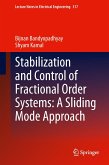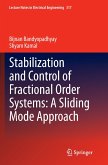This book focuses on multiple agents by a group of non-holonomic robots. The formation control is based on the leader-following approaches. A communication graph theory model for the robots is established. Subsequently, by adopting the sliding mode control methods, the problem of multiple robots system coordinated formation control is studied. Aiming at the problem of uncertainty in the ecological environment, the corresponding solutions are proposed. Some numerical results are illustrated to support the designed sliding mode methods. This book can be used for teaching a graduate-level special topic course in sliding mode control and robotics.
Bitte wählen Sie Ihr Anliegen aus.
Rechnungen
Retourenschein anfordern
Bestellstatus
Storno








